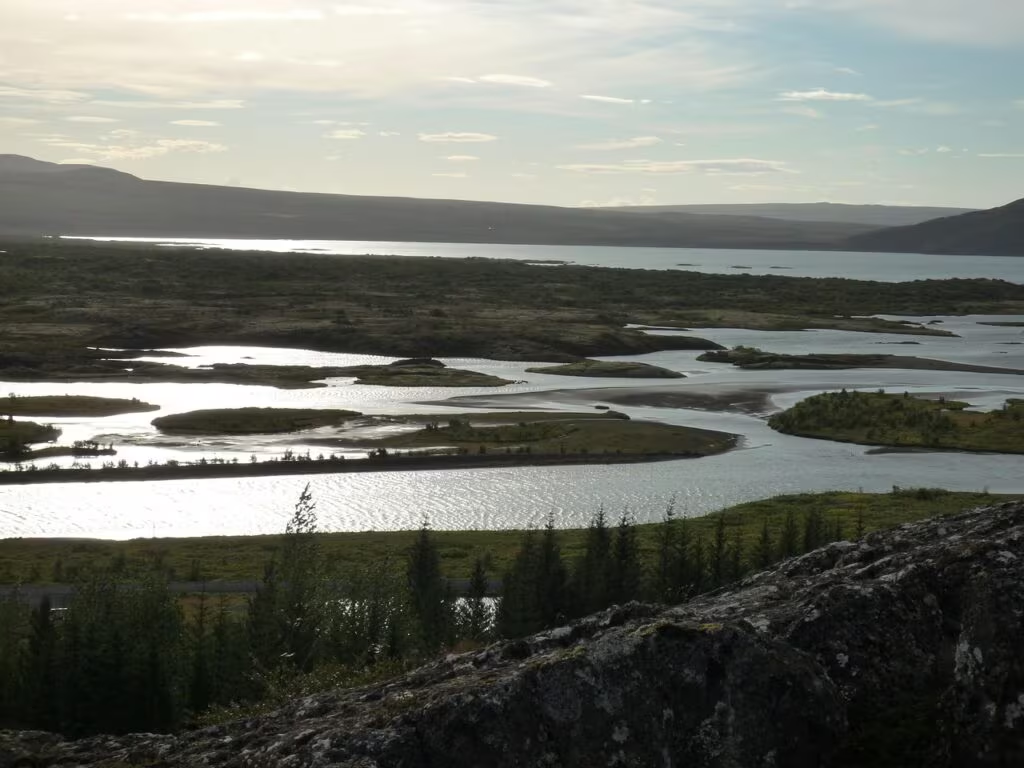Deep Ocean Discovery: Earth’s Crust Is Ripping Itself Apart
Deep beneath the southwest Pacific Ocean, at the boundary of the Tonga Trench, geophysicists have uncovered compelling evidence that the Earth’s crust is not merely sliding smoothly into the mantle—it is actively tearing itself into pieces. This dramatic geological process, known as slab tearing, suggests that one of the planet’s most active and deepest subduction zones may be reaching the end of its life cycle.
A rigorous analysis of seismic data and seafloor mapping (bathymetry) reveals that the Pacific Plate, as it descends beneath the Tonga Plate, is fracturing along pre-existing lines of weakness. This discovery provides crucial insight into the extreme stresses placed on tectonic plates and challenges long-held assumptions about how subduction zones operate.

Anatomy of the Deepest Subduction Zone
The Tonga Trench is notorious among geologists for being the site of the fastest subduction on Earth, where the Pacific Plate plunges into the mantle at speeds up to 24 centimeters (9.4 inches) per year. It is also home to the deepest point in the Southern Hemisphere, the Horizon Deep.
Subduction occurs when one tectonic plate slides beneath another, recycling old oceanic crust back into the mantle. Typically, this is a relatively continuous process, but the Tonga Trench presents extreme conditions that amplify stress:
- Extreme Steepness: The subducting Pacific slab descends at a nearly vertical angle, placing immense strain on the bending point.
- Unusual Thinness: The crust here is unusually thin and cold, making it more brittle and susceptible to fracture.
- High Velocity: The rapid rate of descent increases the mechanical stress on the plate material.
Researchers focused their analysis on the complex boundary where a major fracture zone, known as a fossil transform fault, is being consumed by the trench. Transform faults are massive cracks in the crust where plates slide horizontally past each other. When these features are dragged down into a subduction zone, they introduce significant structural heterogeneity and weakness.
The Evidence: Seismic Anomalies and Fractures
The primary evidence for the tearing comes from detailed seismic tomography—a technique similar to a medical CT scan that uses earthquake waves to map the Earth’s interior structure. The data revealed a distinct pattern of fragmentation in the descending slab, inconsistent with smooth, continuous subduction.
Key Indicators of Slab Tearing
The analysis, published in Geophysical Research Letters, highlighted several key geological features confirming the fracturing event:
- Exploitation of Weakness: The tearing is occurring precisely along the path of the fossil transform fault being dragged into the trench. This pre-existing weakness acts as a zipper, allowing the plate to rip open.
- Disrupted Seafloor Topography: Bathymetric data showed highly irregular seafloor features near the trench axis, indicating that the crust is being pulled apart rather than simply folded or compressed.
- Asymmetrical Descent: The seismic images showed that the slab is descending unevenly, with one side of the plate moving differently from the other, consistent with a tear propagating through the material.
- Mantle Flow Disruption: The tearing allows mantle material to flow into the gap created by the fracture, which further destabilizes the plate boundary and changes the thermal structure of the region.

Why the Pacific Plate Is Ripping Apart
The ultimate cause of this extreme stress lies in the collision of the subducting Pacific Plate with a massive, buoyant feature known as the Louisville Seamount Chain (LSC).
Seamount chains are underwater mountain ranges, often formed by volcanic hotspots, which are significantly thicker and more buoyant than typical oceanic crust. When these chains reach a subduction zone, they resist descent into the mantle.
The Buoyancy Conflict
As the LSC enters the trench, its buoyancy acts like a massive brake, slowing down the subduction in that specific area. However, the rest of the Pacific Plate, driven by the weight of the descending slab (a process called slab pull), continues to move rapidly.
This differential movement creates immense shear stress along the plate boundary. The plate is simultaneously being pulled down rapidly by gravity and resisted locally by the buoyant LSC. This stress concentrates at the weakest point—the fossil transform fault—causing the slab to tear vertically.
“The consumption of the Louisville Seamount Chain is essentially jamming the subduction machinery in that localized area, forcing the plate to find an easier way to descend, which in this case is to fracture and tear along its weakest point,” explained one of the researchers involved in the study.
This is not the first time slab tearing has been observed, but the Tonga Trench example is particularly dramatic due to the extreme speed and depth involved, offering a unique laboratory for studying the mechanics of plate fragmentation.
Implications for Plate Tectonics and Earthquakes
The tearing of the subducting slab has profound implications, both for understanding the long-term evolution of plate boundaries and for assessing seismic hazards in the region.
A Dying Subduction Zone
Geologists view slab tearing as a strong indicator that the subduction zone itself is nearing a critical transition point. When the slab fragments, the driving force of subduction (slab pull) is reduced, and the entire plate boundary becomes unstable. This process suggests that the Tonga Trench, in its current configuration, may be approaching the end of its active life cycle, potentially leading to a reorganization of tectonic boundaries in the coming geological epochs.
Seismic Activity
While the tearing itself occurs deep within the mantle, the process has consequences for surface seismicity. The extreme stresses and fragmentation can influence the distribution and magnitude of earthquakes in the region. The consumption of buoyant material like the LSC is often associated with:
- Increased Intermediate-Depth Quakes: Stress changes in the descending slab can trigger earthquakes at depths of 70 to 300 kilometers.
- Volcanic Activity Changes: Altered mantle flow due to the tear can affect the melting processes above the subducting plate, potentially influencing the volcanism in the Tonga island arc.

Key Takeaways
This pioneering research provides a rare glimpse into the destructive forces acting on tectonic plates deep within the Earth, revealing a process far more complex than simple sliding:
- Location: The tearing is occurring at the Tonga Trench, the fastest subduction zone globally.
- Mechanism: The Pacific Plate is undergoing slab tearing—a vertical fracture of the descending crust.
- Cause: The tearing is driven by the resistance of the buoyant Louisville Seamount Chain as it enters the trench, creating immense stress that exploits a pre-existing fossil transform fault.
- Significance: This fragmentation indicates that the subduction zone is highly unstable and may be nearing the end of its current geological cycle.
- Methodology: The findings rely on detailed analysis of seismic tomography and bathymetry data.
Conclusion
The discovery of the Pacific Plate tearing itself apart beneath the Tonga Trench underscores the dynamic and often violent nature of plate tectonics. It confirms that the consumption of large, buoyant features like seamount chains can fundamentally alter the mechanics of subduction, leading to the fragmentation of the crust. For geophysicists, this provides critical data for refining models of plate dynamics and understanding the forces that shape our planet’s surface and interior, demonstrating that even the largest geological structures are subject to catastrophic failure under extreme stress.
Original author: Michelle Starr
Originally published: October 31, 2025
Editorial note: Our team reviewed and enhanced this coverage with AI-assisted tools and human editing to add helpful context while preserving verified facts and quotations from the original source.
We encourage you to consult the publisher above for the complete report and to reach out if you spot inaccuracies or compliance concerns.

